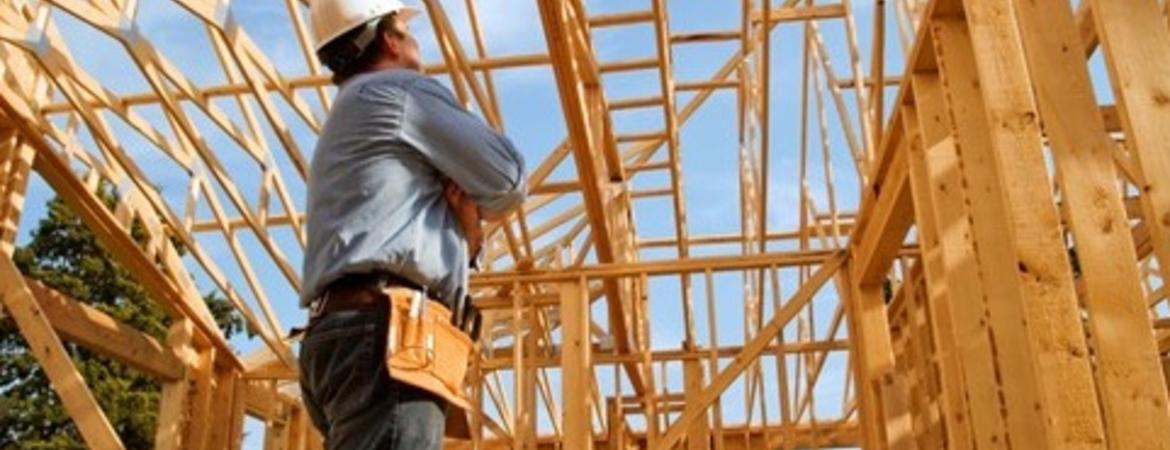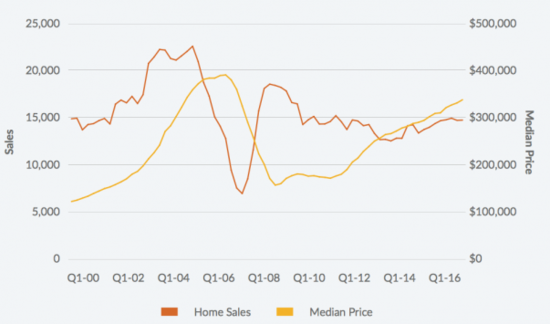
A decade after the Great Recession inflicted its wreckage on the Inland Empire’s housing market and economy concern that another real estate bubble is forming has been on the rise. According to a new analysis released today by the UC Riverside School of Business Center for Economic Forecasting and Development, there are no signs of a bubble in sight and this year may be the best opportunity in a long time for first-time buyers and others to become homeowners.
The new analysis suggests that when the next recession does materialize it is unlikely to be as severe as the last downturn in part because of the Inland Empire’s economic growth and fundamental changes in the local economy.
Although the median price of a home still falls short of its pre-recession peak, the Inland Empire’s housing market has registered steady gains ever since the recovery began in earnest. Since 2011 prices have doubled in the area and given economic and housing market fundamentals, many Inland Empire communities are expected to surpass their pre-recession price peak this year.
Perhaps even more importantly, a confluence of developments on both the supply and demand side of the local housing market may make this year, and next, the best in the current cycle, creating opportunities for buyers. On the supply side, new home construction in the Inland Empire rose by one-fifth in 2017 as both single-family and multi-family permits hit their highest levels in 10 years.
On the demand side expected increases in household formation, coupled with income and job growth, have enabled more households to accumulate the savings needed for down payments. Add to that low, but rising, interest rates, and an apparent easing of credit standards, as implied by a lower average FICO Credit Score on Fannie Mae loan acquisitions, and it may be an opportune time for many to enter the home buying market.
“Arguably, the local housing market has underperformed in the current expansion. While home prices have risen, home sales have moved sideways in recent years and construction has fallen short of needs,” said Robert Kleinhenz, executive director of research at the Center for Economic Forecasting and Development and the report’s author. “But in recent quarters construction activity has ramped up and expected increases in interest rates lend new urgency to would-be buyers. Given these developments and the fact that the Inland Empire will be the fastest growing part of Southern California over the next several years, we expect more households to take advantage of the region’s housing options and better affordability.”
Kleinhenz says the importance of attracting younger households and first-time buyers is critical because young households who will make up the future workforce of the region. According to the analysis, the Inland Empire continues to enjoy a strong affordability advantage over neighboring Los Angeles, Orange, and San Diego Counties.
In addition to an expanding housing market, since the Great Recession, the Inland Empire’s economy has also grown and evolved in other important ways. Most notable may be array of industries that fuel the local economy. Along with the region’s trademark logistics sector, industries such as healthcare, leisure and hospitality, retail trade, construction, government, and other services have all been on the rise, adding significant numbers of jobs to the local economy. According to the analysis, the diverse industry job growth is largely due to the region’s surge in population, and adds more structural strength to the economy, suggesting it is less likely to suffer as much during the next downturn as it did during the Great Recession.
View the new analysis, Housing in the Inland Empire: Where it’s Been and Where it’s Going. The report is part of the Economy White Paper Series produced entirely by the UC Riverside School of Business Center for Economic Forecasting and Development.




